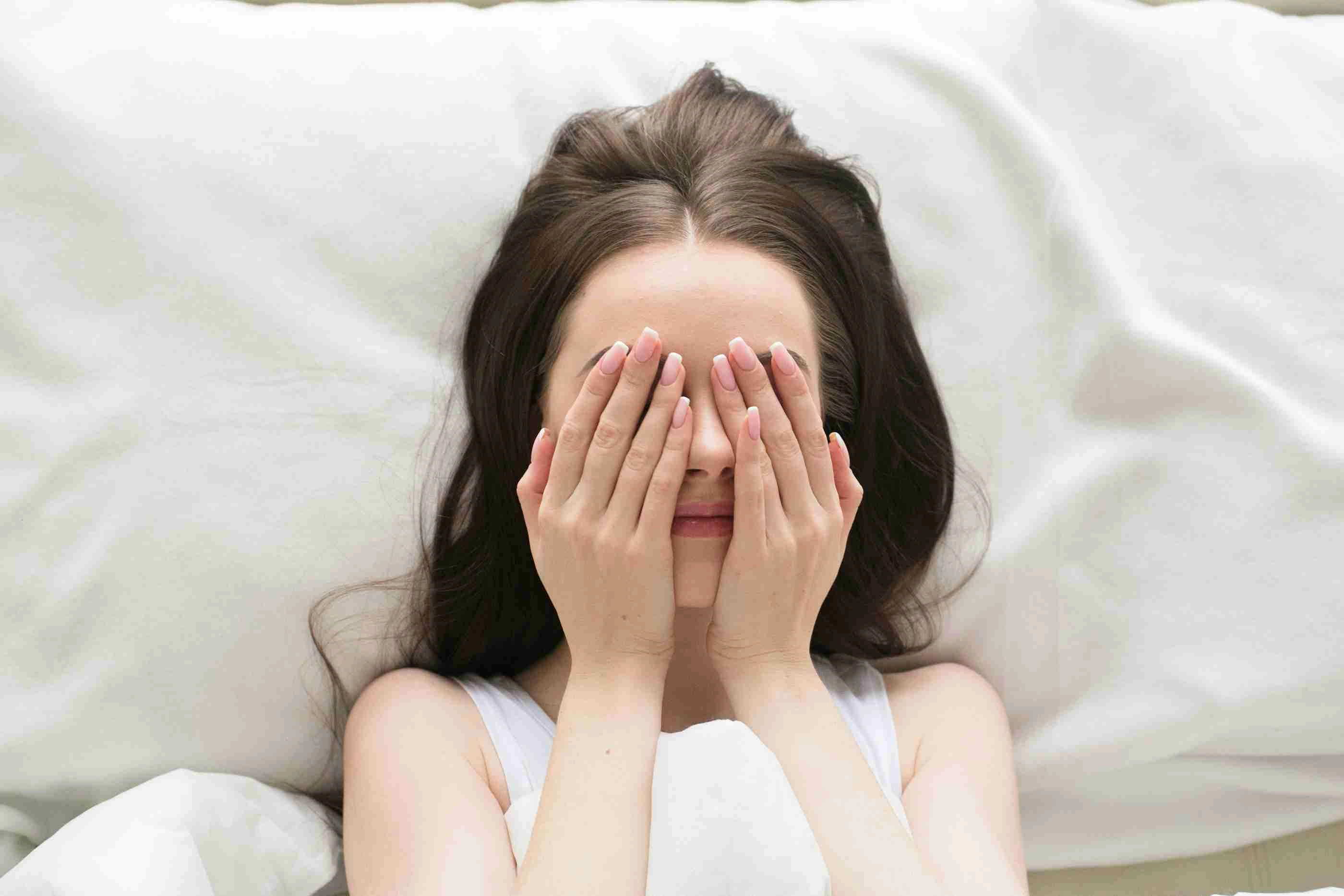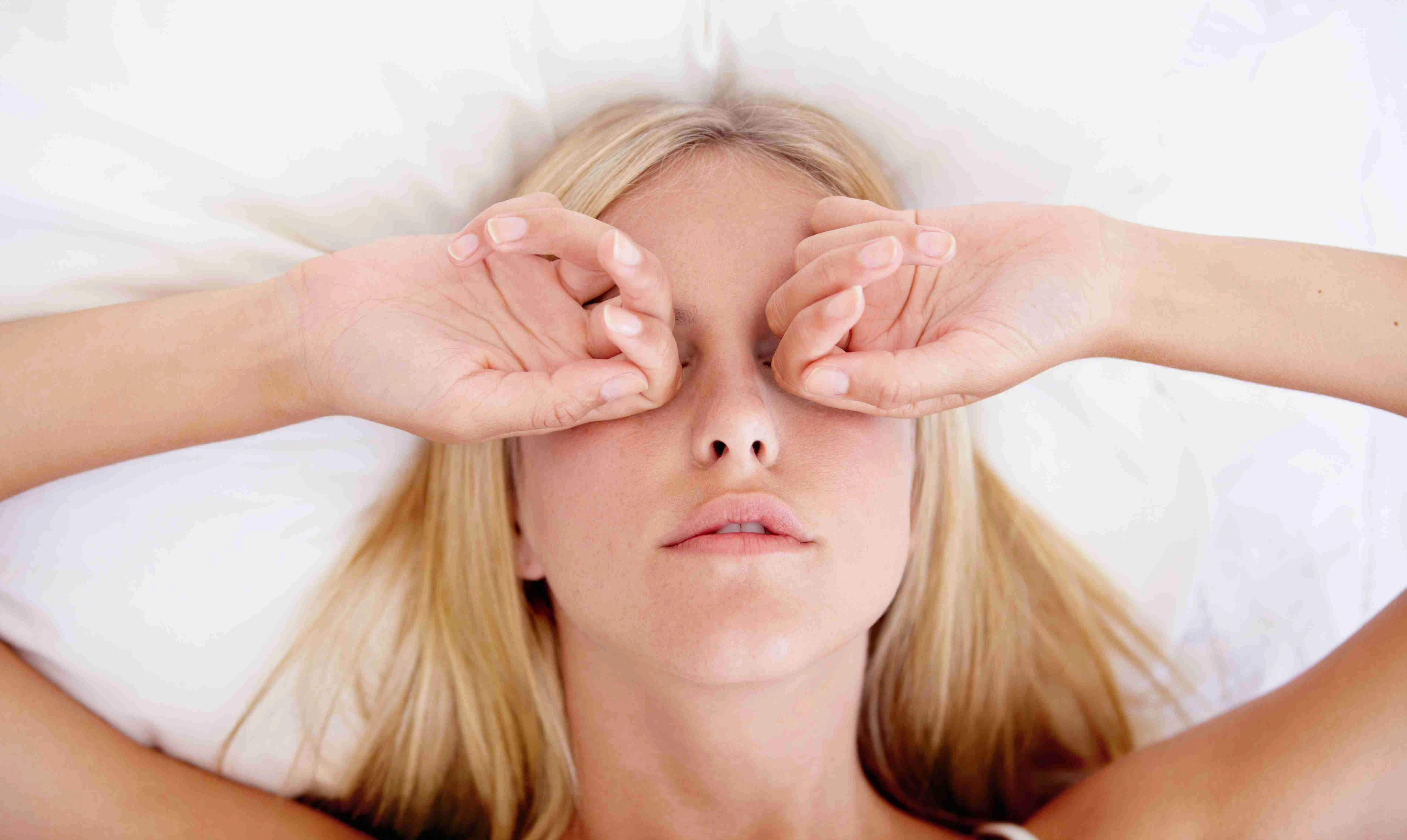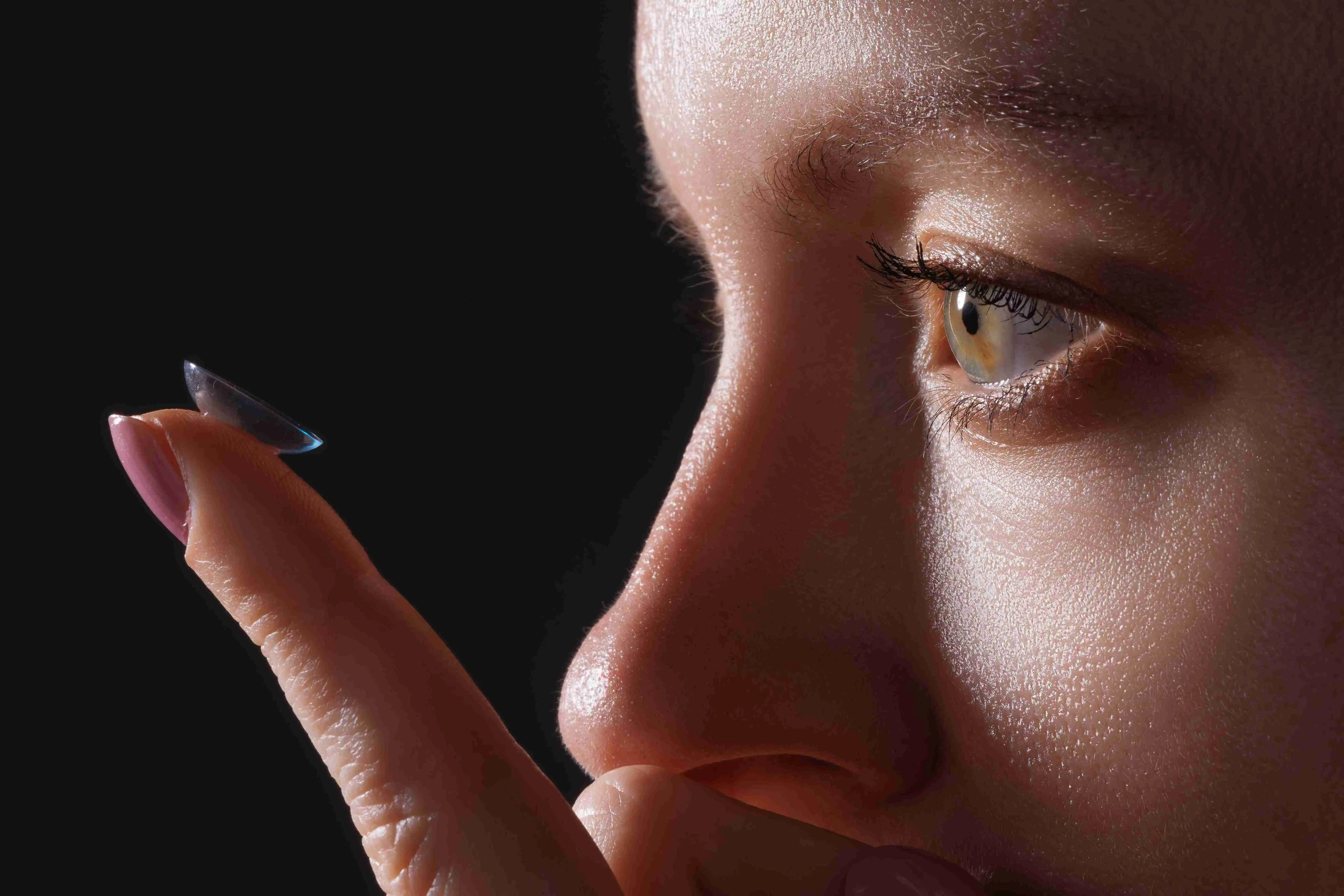Contact lenses function as a practical solution for vision correction; however, wearers face significant eye and overall physical health dangers by sleeping with their lenses on. Sleeping with contact lenses, either by accident or habit, can cause permanent damage to your eyes.
This article discusses the effects of sleeping with contact lenses, why it is harmful, and provides actionable steps for safeguarding your vision.
How Bad Is It to Sleep in Contacts?
Sleeping with contact lenses, even for a nap, leads to severe damage to the eye and overall health. Your cornea requires a continuous supply of oxygen to stay healthy, but wearing contact lenses overnight blocks this flow, thus causing eye discomfort, dry eyes, and irritations. The oxygen deprivation eventually harms corneal cells, thereby reducing their ability to repair themselves.
Additionally, sleeping with contact lenses increases the risk of various eye infections. Long-term vision problems develop from these infections, causing corneal ulcers, corneal scarring, and sometimes permanent vision loss.
Safeguarding your eye health starts with recognizing these dangers. In the upcoming sections, we will examine the particular risks associated with sleeping with contact lenses and provide advice on how to prevent them.
What Happens When You Sleep with Contacts In?

Wearing contact lenses during sleep significantly harms your eye health because it causes multiple complications that affect both the eye's surface health and long-term eye functionality. It also disrupts the natural eye balance, which increases your risk of developing severe infections and other health issues.
Bacterial Keratitis
Bacterial keratitis is a critical eye infection caused by bacterial sources found in environmental areas or on the human body. Sleeping with contact lenses traps bacteria between the lens and the cornea, forming a breeding ground that helps infections grow. Pseudomonas aeruginosa is a common bacterium among the primary causes of this infection.
The risk of developing bacterial keratitis rises substantially when sleeping with contact lenses. Not treating this infection could lead to permanent vision loss because it damages the cornea severely. Early medical intervention becomes vital because untreated bacterial keratitis might necessitate a corneal transplant.
Acanthamoeba Keratitis
Acanthamoeba keratitis is a dangerous infection of the eye that originates from microscopic organisms in water sources, including tap water, lakes, and hot tubs. Contact lens wearers who sleep with their lenses face higher risks of developing this infection. Water contamination leads to Acanthamoeba parasite invasion through the eyes.
This infection both causes severe pain and presents significant complications in treatment. Without proper treatment, Acanthamoeba keratitis causes permanent eye damage, which results in vision loss. Preventing this infection requires both lens avoidance of water contact and strict adherence to cleaning protocols.
Fungal Keratitis
Fungal keratitis presents as a corneal infection from different types of fungi, such as Fusarium and Candida. The condition occurs most frequently within warm, humid climate areas, yet it can present in anyone who wears contact lenses, particularly those who sleep with them.
Extended wear of contact lenses can foster the growth of fungi, which can lead to infection. Fungal keratitis can result in severe damage to both the eye and vision functions. The severity of this condition can require surgical treatment or possible corneal transplant operations to help restore vision.
Oxygen Deprivation
The eye's cornea requires oxygen from the air for proper health function. When you wear contact lenses, especially while sleeping, the lenses restrict oxygen flow to the cornea. Oxygen deprivation leads to eye inflammation and slows down the eye's natural healing processes. Over time, this can damage corneal cells severely and can result in long-term vision problems.
Corneal hypoxia can develop as a result, making it harder for the cornea to regenerate. Avoid using contact lenses at night to protect your eyes and ensure proper oxygen flow to your cornea during the day.
Learn more about Oxygen Levels and Sleep.
Corneal Ulcers
A corneal ulcer represents a deep and painful sore found on the cornea that develops from bacterial or fungal infections. Those ulcers develop from microorganisms, such as bacteria or fungi, trapped beneath contact lenses. The risk of infections increases significantly when you sleep in your contact lenses because they create an environment that encourages bacterial and fungal growth.
Corneal ulcers create permanent scarring on the cornea that could cause vision loss when appropriate treatment is not received. In some cases, surgery or a corneal transplant may be necessary to restore vision.
Signs of an Eye Infection After Sleeping With Contacts

Sleeping with contact lenses increases the risk of developing eye infections and other dangerous complications. It is important to be aware of any signs that may indicate an infection or damage to your eye.
- Blurred Vision: If your vision becomes hazy or unclear after wearing contact lenses, it might be a sign of an infection or corneal damage. Bacterial or fungal infections can impact the surface of your eye.
- Itchy or Burning Eye: An itching or burning sensation could indicate irritation, inflammation, or infection. If these symptoms continue, removing your lenses and allowing your eyes to recover is crucial.
- Redness or Discomfort: Red or bloodshot eyes after wearing contact lenses may suggest an eye infection or irritation due to insufficient oxygen. If the eye redness persists even after removing the lenses, it could indicate the presence of an infection.
- Eye Pain: Feeling intense or ongoing pain in your eyes after using contact lenses is a significant indication. It may be a result of an infection, corneal abrasions, or ulcers. If the pain continues, you should seek immediate medical attention.
- Excessive Tearing or Discharge: Increased tear production or unusual discharge from the eyes may indicate an infection such as bacterial keratitis. A professional assessment is necessary if the discharge appears thick or yellowish.
- Swelling: Swelling near the eyes, especially the eyelids, may indicate an infection or irritation resulting from extended contact lens usage. If the swelling continues, it is important to see an eye doctor.
- Sensitivity to Light: Photophobia, or light sensitivity, following contact lens use may result from corneal injury or an eye infection. If this happens, it is essential to take out your lenses and get immediate medical care to prevent any additional issues.
What To Do After Sleeping with Contacts In

If you accidentally sleep with your contact lenses in, it is important to follow proper steps to protect your eyes and avoid further damage.
- Don’t Remove Lenses Immediately: If your eyes feel dry or stuck, avoid removing the lenses immediately, as this can cause further irritation. Instead, use lubricating eye drops to rehydrate your eyes and facilitate the removal of the lenses. This reduces the risk of harming your cornea.
- Safely Remove Lenses: After applying the drops, try to remove the lenses gently. If they seem stuck or uncomfortable, give it a few more minutes before attempting again. Avoid pulling on the lenses forcefully, as this could lead to abrasions or further irritation to your eye.
- Check for Symptoms of Infection or Damage: After taking out your lenses, take a close look at your eyes for any signs of infection or damage. Look out for symptoms such as redness, excessive tearing, sensitivity to light, or any pain in your eyes. If you see any of these symptoms, it's crucial to take immediate action.
- Allowing Your Eyes to Recover: Give your eyes a break. Try not to wear contacts for at least 24 hours to let your cornea heal. This will help prevent additional irritation and provide your eyes with an opportunity to recover from any dryness or damage that may have occurred from prolonged use.
- Hydrate and Rest Your Eyes: Use artificial tears or lubricating eye drops to keep your eyes hydrated. These can provide relief from dryness that may occur due to decreased oxygen flow while you sleep. Also, try to limit screen time and any activities that could put extra strain on your eyes as they heal.
- Seeking Professional Help: If you have ongoing discomfort, eye pain, or any symptoms of infection, it is important to get medical help right away. An eye doctor can evaluate your situation and suggest the right treatment, which may include antibiotics or other necessary interventions.
Best Practices for Contact Lens Care
Taking proper care and maintaining good hygiene are crucial for keeping your eyes healthy and avoiding issues such as infections or discomfort. Adhere to these best practices to ensure your eyes stay safe and your contact lenses remain in excellent condition.
Maintaining Proper Hygiene
Good hygiene is crucial to preventing infections. Here is how to keep your lenses and eyes healthy:
- Wash Your Hands Before Handling Lenses: Always make sure to wash your hands well with soap and water before touching your contact lenses. This helps to avoid transferring dirt, bacteria, and oils from your hands to your eyes, which can lower the risk of infection.
- Clean and Disinfect Your Lenses Properly: Avoid using water or saliva for cleaning your lenses. Always utilize the suitable contact lens solution advised by your eye care professional. Lightly scrub and wash the lenses to eliminate dirt and disinfect them prior to placing them in the case.
- Replace Your Lens Case Regularly: Your contact lens case can gather bacteria as time passes. Replace it every 3 months or earlier if it looks damaged. Consistently cleaning and replacing your lens case ensures a hygienic environment for your lenses.
- Don’t Reuse an Old Solution: Do not reuse contact lens solution. After you clean your lenses, throw away the used solution and replace it with a fresh one. Using an old solution can introduce bacteria and lead to eye infections, as it becomes less effective after being used.
Preventing Accidental Sleep with Contacts
To avoid the risks of sleeping with your contacts in, follow these simple strategies:
- Set a Reminder to Remove Lenses: If you often forget to take out your contact lenses at night, try setting a reminder on your phone or placing a note beside your bed. This will aid you in establishing a routine and reduce the chance of sleeping with your lenses.
- Create a Bedtime Routine for Removing Lenses: Make removing your lenses a regular part of your bedtime routine, just as brushing your teeth. Consistently doing this will aid you in remembering to remove them, decreasing the likelihood of unintentionally sleeping with them.
- Consider Extended Wear Lenses: If you struggle to remember to take your lenses out at night, you might want to think about trying extended wear lenses. These lenses are made for overnight use and offer added convenience, but it's essential to adhere to your eye care professional’s advice.
- Keep a Lens Case by Your Bed: In case you forget to remove your lenses and need to take them out in the middle of the night, keep a spare lens case and solution by your bed. This way, you can properly store your lenses immediately, reducing the chance of wearing them for too long.
FAQs
What happens if I accidentally sleep with my contacts in?
Sleeping with contacts may lead to dryness and discomfort, increasing the likelihood of eye infections like bacterial keratitis. Moreover, it restricts the oxygen flow to your cornea, which may result in lasting harm affecting eye comfort and health.
How long can you sleep with contacts on?
It is not safe to sleep with contacts, even for a short time, as this diminishes the oxygen supply to your eyes, raising the likelihood of dryness, irritation, infection, and lasting harm. Make sure to take out your contacts before going to bed to ensure your eyes stay healthy.
Can I take a 20-minute nap with contacts on?
Even a 20-minute nap with contacts can lead to dryness, irritation, and a heightened risk of infection. Always remove your lenses before napping to avoid limiting oxygen to your eyes, keeping them healthy and comfortable.
Why is it not allowed to sleep with contact lenses?
Wearing contact lenses while sleeping limits the oxygen supply to your cornea, leading to dryness, discomfort, and a higher likelihood of infections. It may also result in corneal damage and permanent vision issues. To prioritize eye health, remove contacts before sleeping.
Conclusion
Sleeping with contact lenses, although it appears like a minor issue, can create dangerous eye problems. From irritation and discomfort to infections that can lead to long-term vision problems, the risks are real.
By following a few simple habits, like removing your lenses before bed, practicing good hygiene, and keeping a routine, you can easily protect your eyes and avoid unnecessary damage. Taking care of your eyes now will ensure improved vision, together with fewer future complications. Always trust your body signals and consult professional help immediately if your lenses cause unusual symptoms.
Karen Barnard
Karen is a Human Movement Science expert and a certified sports nutrition and massage therapist. At Sleepiverse, she combines her passion for human movement science and sleep health to educate herself and her readers about healthier sleep. In addition to writing articles, Karen manages a fitness studio offering private training, athletic conditioning, and sports massage therapy. She focuses on providing people with a holistic environment for people to reach their health goals, often incorporating stretch therapy to promote mental tranquillity and help people improve their sleep.


